79 F. high yesterday in the Twin Cities.
79 F. average high on August 25.
96 F. on August 25, 2013. Remember, we endured six 90-degree days during the fair last year.
August 25, 1915: Severe cold and killing frosts across Minnesota with 23 degrees at Roseau.
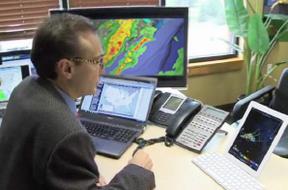
On Call
What happened to 8 to 5? Most of us are connected to The Matrix ’round the clock – late night e-mails – weekend conference calls. Vacation? What’s that? With any luck Heaven doesn’t have Wi-Fi.
A second opinion is a good idea and friends and family often reach out to me for guidance. Here’s how my weekend went: 1). My wife glaring at me during a foggy, drizzly air show in Duluth. 2). My dear friend, Heidi, texting me from Brainerd. “No TV, Tornado Warnings issued! Should I take cover?” Yes, we should all take cover, 24 hours a day. 3). Pulling over to the side of the road and checking Doppler on my phone to see if St. Cloud would see a tornado (it went north, touching down near Gilman).
I wish Mother Nature would take some time off. That should happen, at least close to home – as the latest push of drier, cooler air of Canadian ancestry arrives, dropping our dew points into the 40s by midweek.
The next surge of warmth sparks showers and a few heavy T-storms into town late Wednesday into Friday. The sun peeks out next weekend. A storm may flare up on Labor Day (don’t look surprised) but highs near 80F should cooperate with most outdoor plans.
Uh oh, another holiday. Time to sleep with one eye open.

As Good As It Gets. Today will be another fine day with low humidity (dew points in the 40s) and abundant sunshine. Soak it up because clouds increase tomorrow with a chance of showers. The best chance of rain comes Thursday and Friday, especially southern Minnesota, before we warm up and dry out over the weekend. Sunday still looks like the best day with highs topping 80F, a better chance of T-storms on Labor Day. Of course. Weather trend: Weatherspark.

60-Hour Rainfall Trend. 4 KM NAM guidance shows a band of showers streaking across central Minnesota Wednesday; a better chance of showers and a few embedded T-storms Thursday into early Friday, especially south of MSP. If you need a dry sky today is your day. Guidance: NOAA and HAMweather.

Storm Leaves Damage in Morrison, Benton Counties. The SC Times has more details on Sunday afternoon’s outbreak of severe weather. Based on all the funnel cloud sightings my semi-educated hunch is that it was probably tornado-related damage. Here’s an excerpt: “A thunderstorm Sunday evening damaged property in parts of Morrison and Benton counties. A tornado was reported in Granite Ledge Township. Funnel clouds were spotted in Gilman and Rice. Hail was reported in Hillman. In Morrison County, damage was reported near Morrill in the southeastern corner of the county about 1 mile from the county line. Three properties reported damage, said Scott MacKissock, the Morrison County emergency management director….”
* Screen grab above courtesy of WJON.com and dean681 via YouTube. The Brainerd Dispatch has more details here.

Confirmation: EF-0 Strength Tornado. The Twin Cities office of the National Weather Service surveyed the scene, and determined that an EF-0 tornado, with estimated winds near 75 mph, was on the ground for 5.8 miles, with an average path width of 150 yards, producing minor to moderate damage.
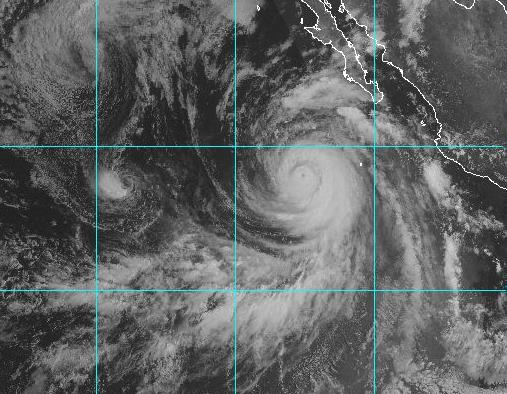
First Category 5 Hurricane in Eastern Pacific since 2010. Marie is churning up the seas, but not expected to come close to land. The extreme storm may leave surfers in southern California with a big grin on their faces though. More details at Decoded Science.

NASA Satellite Set To Help Farmers Combat Drought. Gizmag has all the details; here’s an excerpt: “NASA is set to launch a new satellite with the capacity to measure soil moisture on a global scale. Once operational, data from the Soil Moisture Active Passive (SMAP) satellite could be used to better inform farmers in agricultural decision making, providing unprecedented levels of detail on moisture trends with an efficiency and speed unattainable using current technology…”
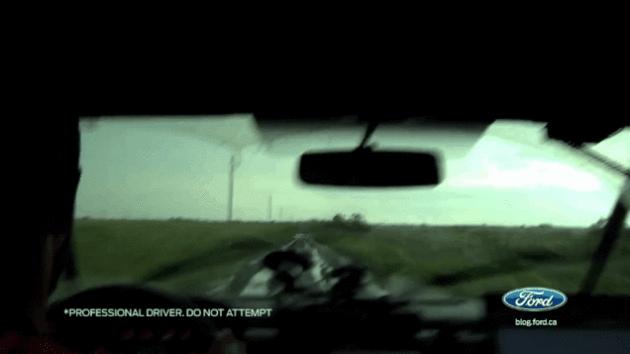
Storm Chasers On What It’s Like To Take a Pickup Truck to a Tornado. Here’s an interesting post (and great product placement!) courtesy of Jalopnik: “Ford Canada’s latest commercial series profiles Ford owners who do cool jobs with their trucks, and the Tornado Hunter F-150 is easily the most badass so far. Their bright-orange SuperCrew called “flash” looks straight out of Jurassic Park...”
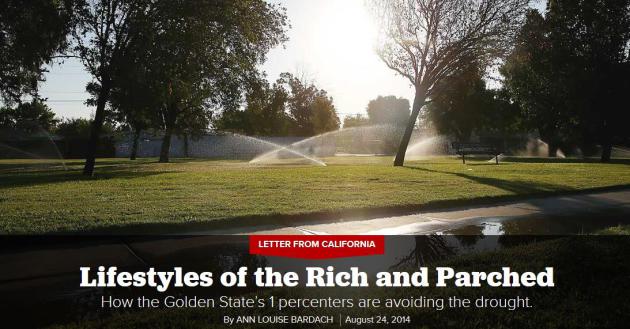
Lifestyles of the Rich and Parched. Oh it must be good to be Oprah. Politico has a fascinating story about inequality when it comes to water usage and water rights. The uber-rich simply have the means to get what they want, no matter the price. Here’s a clip: “…The saga begins with the fact that much of California is a desert or semi-desert. The only outside source for the state comes from the Colorado River, a siphon created in the 1920s that has long embittered other Western states. Irrigating a desert is no small feat and has prompted all manner of chicanery and backroom deals, as immortalized in the film Chinatown. Nor does it help that the state is burdened by a chaotic system of 440 water districts or agencies. The county of Santa Barbara, population 250,000, has 12 water boards. Compare that to New York City, population 8.5 million, which has one…”
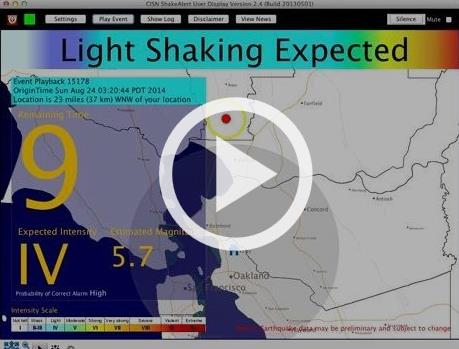
Earthquake Early Warning System Gave 10-Second Alert Before Napa Quake Felt. Could residents of Los Angeles get a 40-50 second heads-up before The Big One strikes? Here’s an excerpt of a story at The Los Angeles Times: “Scientists at UC Berkeley released a video showing an earthquake early-warning system that sent an alert before the magnitude-6.0 Napa earthquake Sunday morning. Officials said the system provided an alert 10 seconds before the quake was felt. California is working to complete a statewide system, which could be unveiled in the next few years…”
Image credit above: “The ShakeAlert earthquake early warning project issued an alert for the earthquake that hit Napa, Calif. early Sunday morning.”
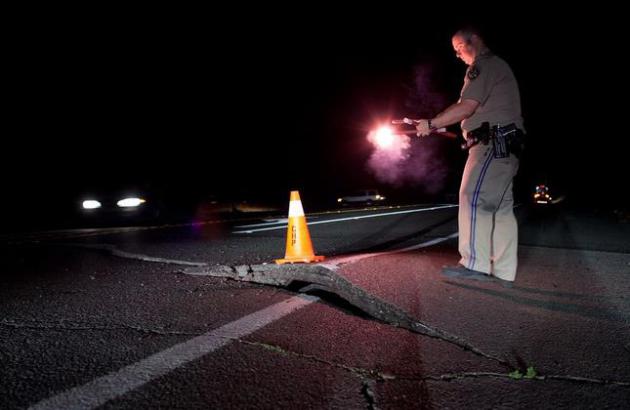
What Caused California’s Napa Valley Earthquake? Faults Explained. We all have our faults (sorry, who writes this crap?) but there are far more over the western USA, with a significant, ever-present earthquake risk from L.A. to Seattle. National Geographic has a good primer on what, exactly, makes the Earth shake, and why all faults are not created equal. Here’s an excerpt: “…All earthquakes spring from faults deep underground, but it can take scientists some time to identify the particular type of fault-line activity behind a specific earthquake. That will likely be the case with Sunday’s Napa Valley quake, where some early reports suggested the quake was perhaps provoked by the Franklin Fault, a crack in the Earth that was thought to be dormant for 1.6 million years…”
Photo credit above: “A California Highway Patrol officer redirects traffic from a buckled section of California’s Highway 12 after Sunday’s early morning earthquake.” Photograph by Peter DaSilva, EPA.
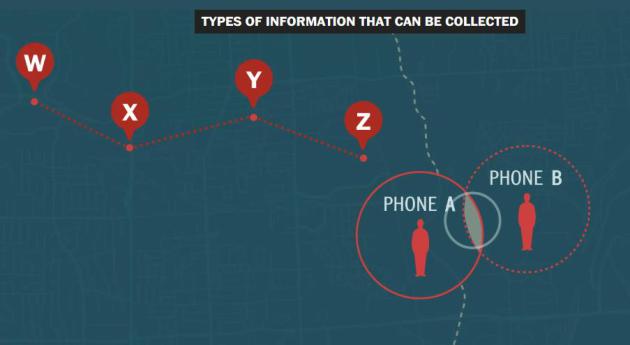
How You Can Be Tracked Anywhere in the World. The Washington Post has a very effective infographic that explains the technology between cellular phone tracking. I’ll say it again, if the product or service is “free” YOU are the product. Here’s an excerpt: “Surveillance companies are marketing systems to governments worldwide that are capable of pulling location data out of global cellular networks, even if you are traveling in another country. These systems are designed so that neither cellphone users nor their carriers detect the tracking. That could allow government officials to potentially sidestep court review or other systems designed to protect the rights of people targeted for surveillance…”
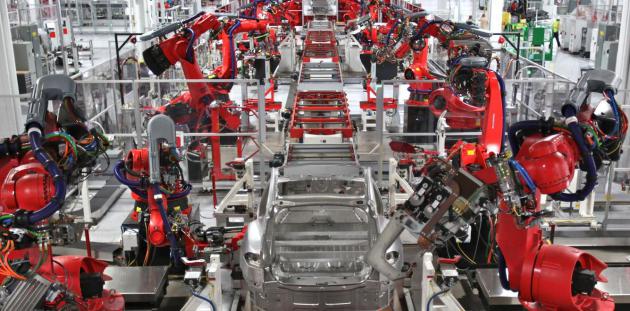
Photo credit above: “The next ones off the assembly line will be cheaper.” Steve Jurvetson/Flickr.

People Think Experiences Bring Happiness, Still Opt for Things. Could it have something to do with the 143,195 commercials and ads we’re bombarded with daily? Here’s a clip from an interesting article at Scientific American: “…Researchers surveyed people before and after they made purchases. Beforehand, they rated life experiences as making them happier and as a better use of money than buying objects. But subjects still tended to choose to buy objects over experiences. Then, despite picking items, most said they still believed the experiences would have been a better choice. The researchers ascribe this conflict to the tangible and quantifiable nature of a thing…”
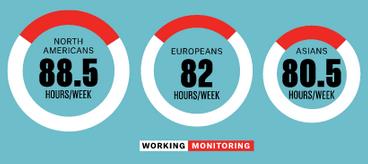
E-Mail is Killing Us. Yes, many of us are now connected almost 24/7, 365 days a week. Vacation? That’s a good one! When the e-mail arrives you are expected to stand up and salute. Here’s an excerpt of a good piece at Quartz: “…But in other white-collar industries—law, consulting, advertising, fashion, media, non-profits, fundraising, politics—individual workers are constantly working with new clients and partners, whose needs require constantcontacting, pinging, base-touching, out-reaching, and so on. Email isn’t just for your cross-country clients; it’s just as likely to be for your cross-desk colleagues. The upshot is a ceaseless flow of correspondences that often bleeds over into dusk. Email consumes an average of 13 hours per week, according to a McKinsey Global Institute paper, or 28% of the average workweek…”
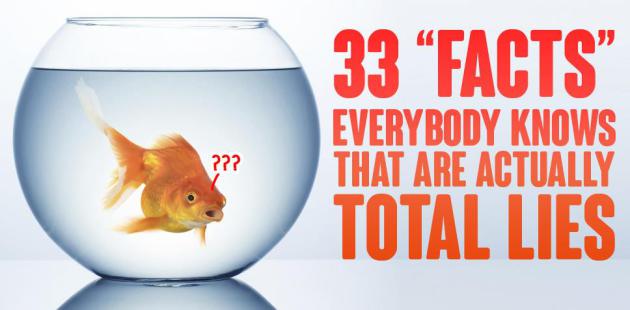
33 “Facts” Everybody Knows That Are Actually Totally Lies. Disclaimer: I know a fair number of people that really do use only 10% of their brains. I’ve worked with a few of them in broadcast news. Here’s a sampling of urban legends, courtesy of Buzzfeed:
2. Thomas Edison didn’t invent the light bulb.
3. You do not use only 10% of your brain. You use 100%.
4. You can’t see the Great Wall of China from space. (For a start, it’s the same colour as the surrounding landscape.)
5. Twinkies do not last forever. Their shelf life is about a month and half...”
Image credit above: Valengilda/Thinkstock/Tom Phillips/BuzzFeed.

It’s Time To Accept This Fact: A Really Great Marriage Is Rare. Here’s an uplifting thought for a Tuesday morning – and I’m not sure I buy into the premise. I just think many of us have unrealistic expectations (about everything). Being happy where you’re at, no matter what else is happening in your life, is a gift. Here’s a clip from a story at Quartz: “…The painful truth is that really great marriages exist, but they are rare. What we as a society should probably be telling married people is, “If you have love, passion, companionship and equality in your marriage, you are wealthy beyond words. If you don’t, you have two choices. You can decide that your marriage is the best you’re going to get and try to be content. Alternatively, you can leave your marriage to play the lottery of finding that perfect partner, accepting that you are unlikely to win and may have to stay single for the rest of your life…”
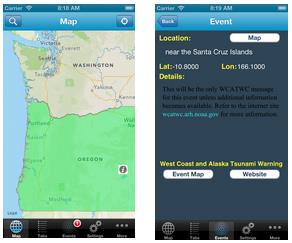
Feeling A Little Better About Our Severe Thunderstorm Warnings. There’s an app for…that? If you live near the coastline of Washington or Oregon you can now download an app that gives you tsunami warning and safety information. Here’s an excerpt from RC3: “Residents, emergency managers and tourists in Washington and Oregon have a new tool to help with tsunami preparedness. TsunamiEvac-NW is a new smartphone app that shows users:
- Evacuation zones where they live, work, or go to school;
- Helps people plan evacuation routes; and
- Maps important locations, buildings, and landmarks nearby…”

Drunken Bride Orders Taco Bell While Walking Thru Drive-Thru. My new hero. Because you never know when you’re going to crave a chalupa. Details at HuffPo: “…The photo was posted to Reddit Thursday with the caption, “My drunk wife trying to order Taco Bell after the reception.” It captured the hearts and souls of hungry, drunk people everywhere — racking up over 1 million views in just one day. According to the groom, who posted the photo, the Taco Bell was next to their hotel…”
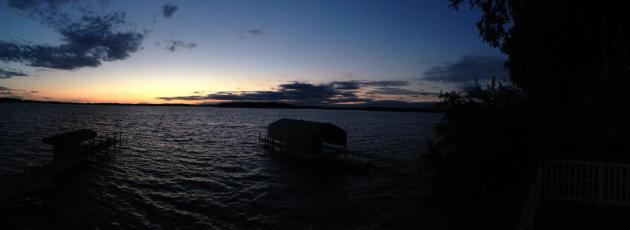
TUESDAY: Cool sun, pleasant. Dew point: 48. Winds: NW 10. High: 74
TUESDAY NIGHT: Mostly clear and comfortable. Low: 59
WEDNESDAY: Fading sun, late night T-storms. High: 76
THURSDAY: Stormy & wet southern MN and MSP metro. Sunshine north. Wake-up: 57. High: 71
FRIDAY: Damp start, then gradual clearing. Wake-up: 58. High: 78
SATURDAY: Partly sunny, PM thunder up north. Wake-up: 60. High: near 80
SUNDAY: Driest day? Hazy sun. Dew point: 65. Wake-up: 63. High: 81
LABOR DAY: Unsettled, few T-storms likely. Wake-up: 65. High: 79
Climate Stories….
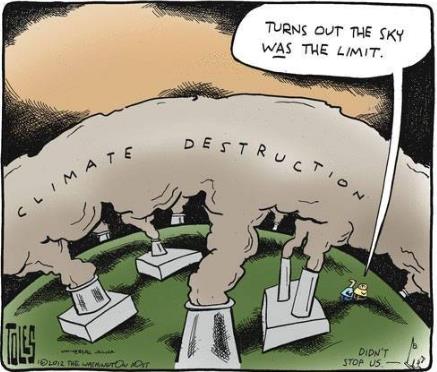
Cartoon courtesy of Tom Toles and the Washington Post and Greenpeace, New Zealand.

Tropical Forests: Seeing The Wood. The Economist describes how conserving forests is one of the best ways to deal with the carbon problem and save the environment; here’s a clip: “…This matters to everyone, including rich countries in temperate zones, because of the extraordinary contribution that tropical forests make to mitigating carbon emissions. Trees are carbon sinks. If you fell and burn them, you release carbon into the atmosphere. If you let them grow, they squirrel carbon away in their trunks for centuries. Despite decades of destruction, tropical forests are still absorbing about a fifth of emissions from fossil fuels each year. Encouraging countries to plant trees (or discouraging them from logging) is by far the most effective way of reducing greenhouse-gas emissions…”
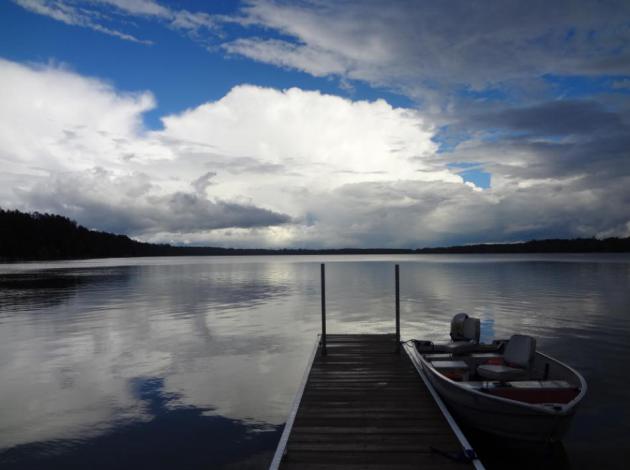
When Faith and Facts Collide. Tell that to Copernicus and Galileo, right? Here’s an excerpt of an Op-Ed at Huffington Post that got my attention: “…When faith and science collide, science ultimately wins. Facts are inherently verifiable; beliefs are not. But the process of reconciling paradigm-busting facts with long-cherished beliefs is agonizing and slow. Not until 1992, 350 years following Galileo’s death, did the Vatican officially apologize for the Church’s harsh treatment of the greatest scientist of his time. In the long run, facts prevail. In the short run, belief — right or wrong — trumps the facts. And there’s the rub…”
Photo credit above: Daniel Bovitz.

